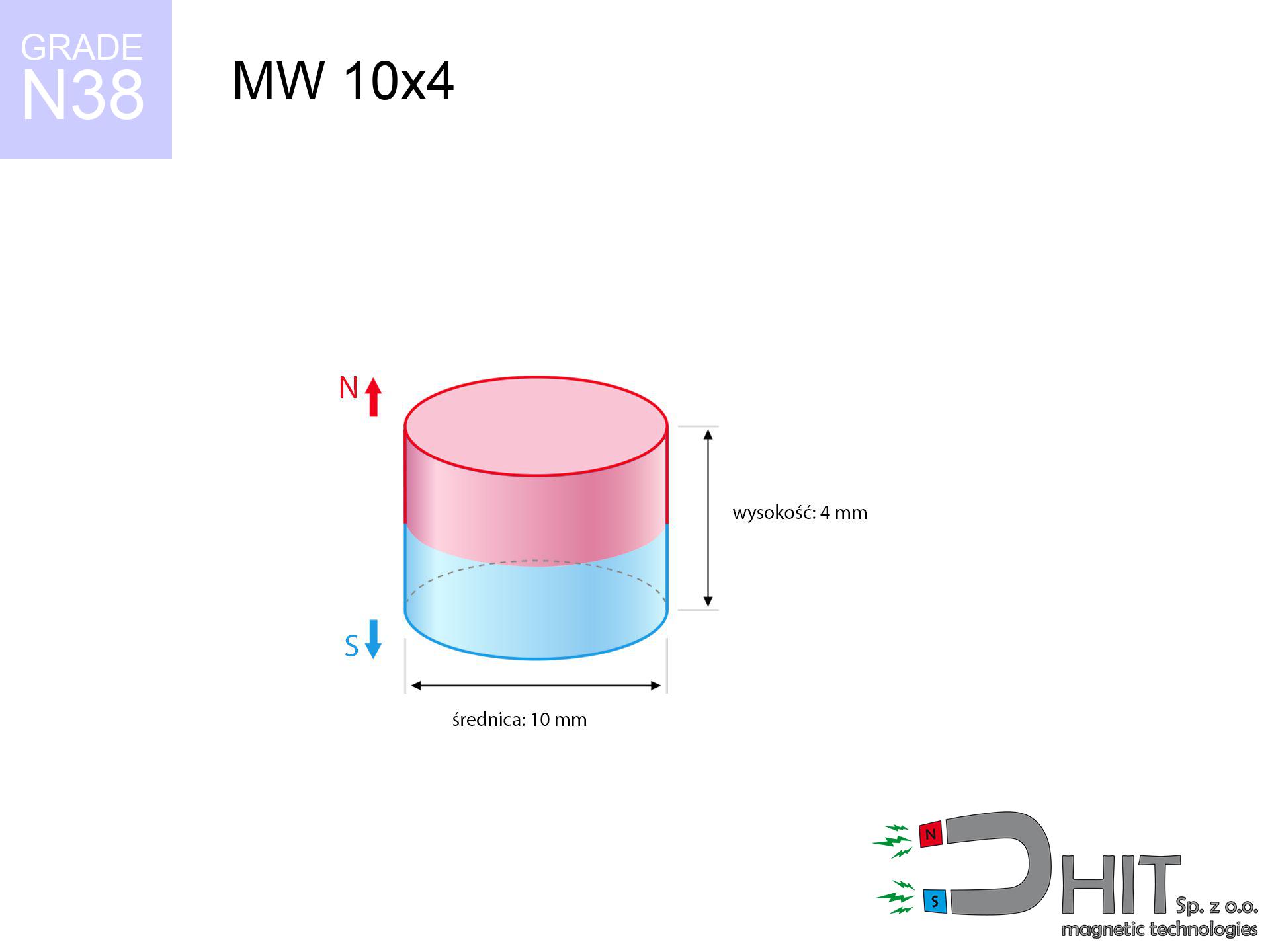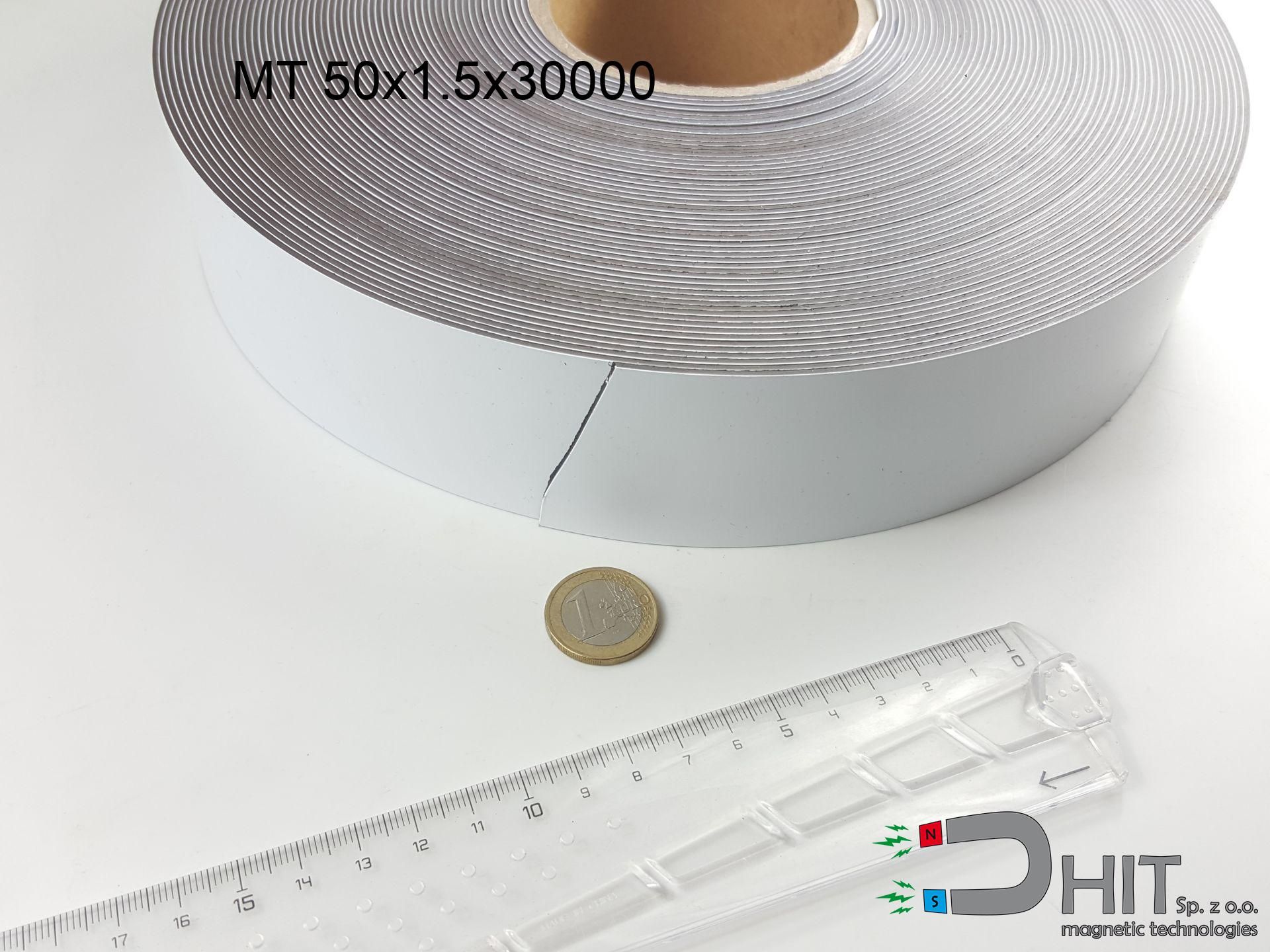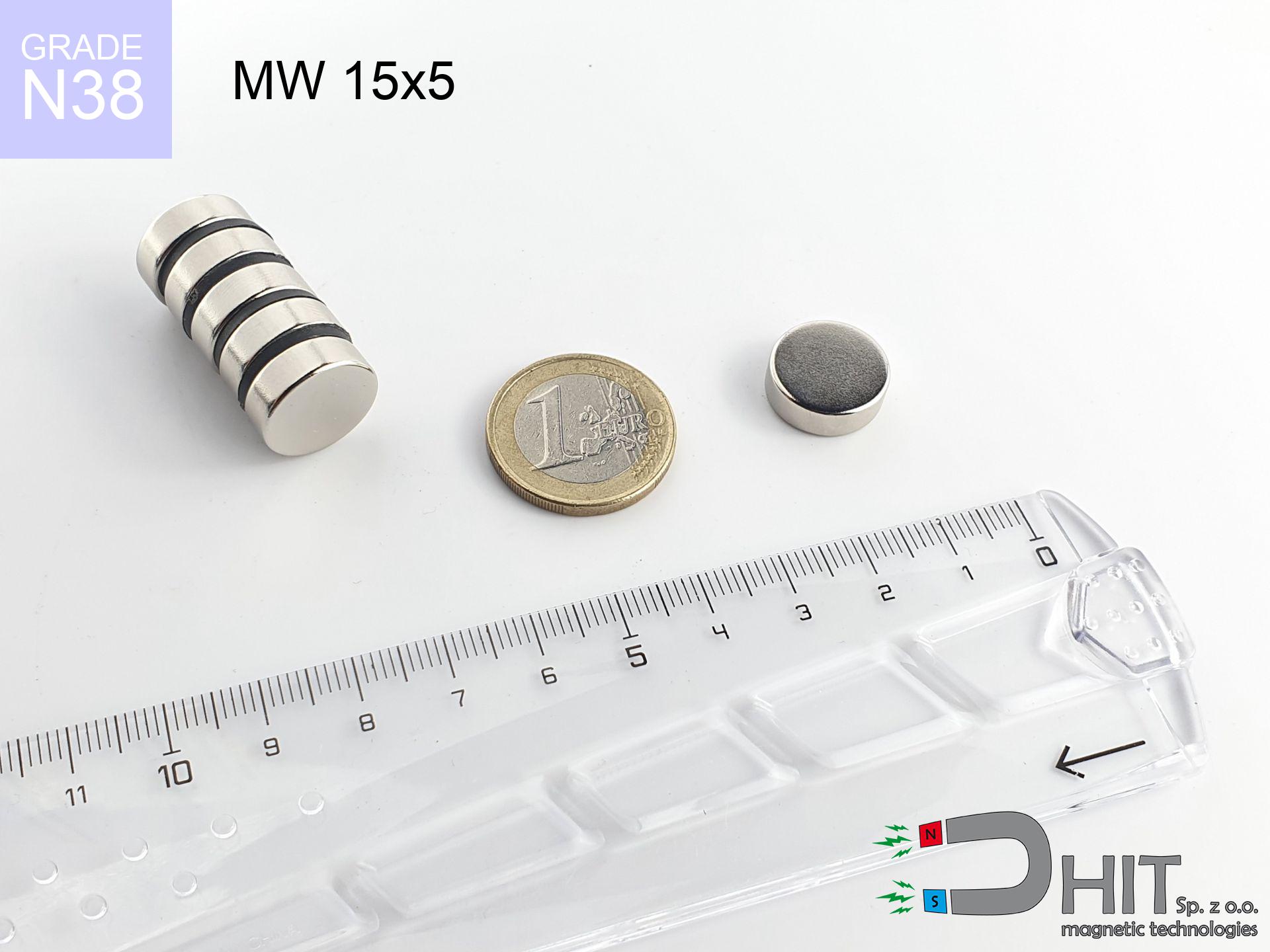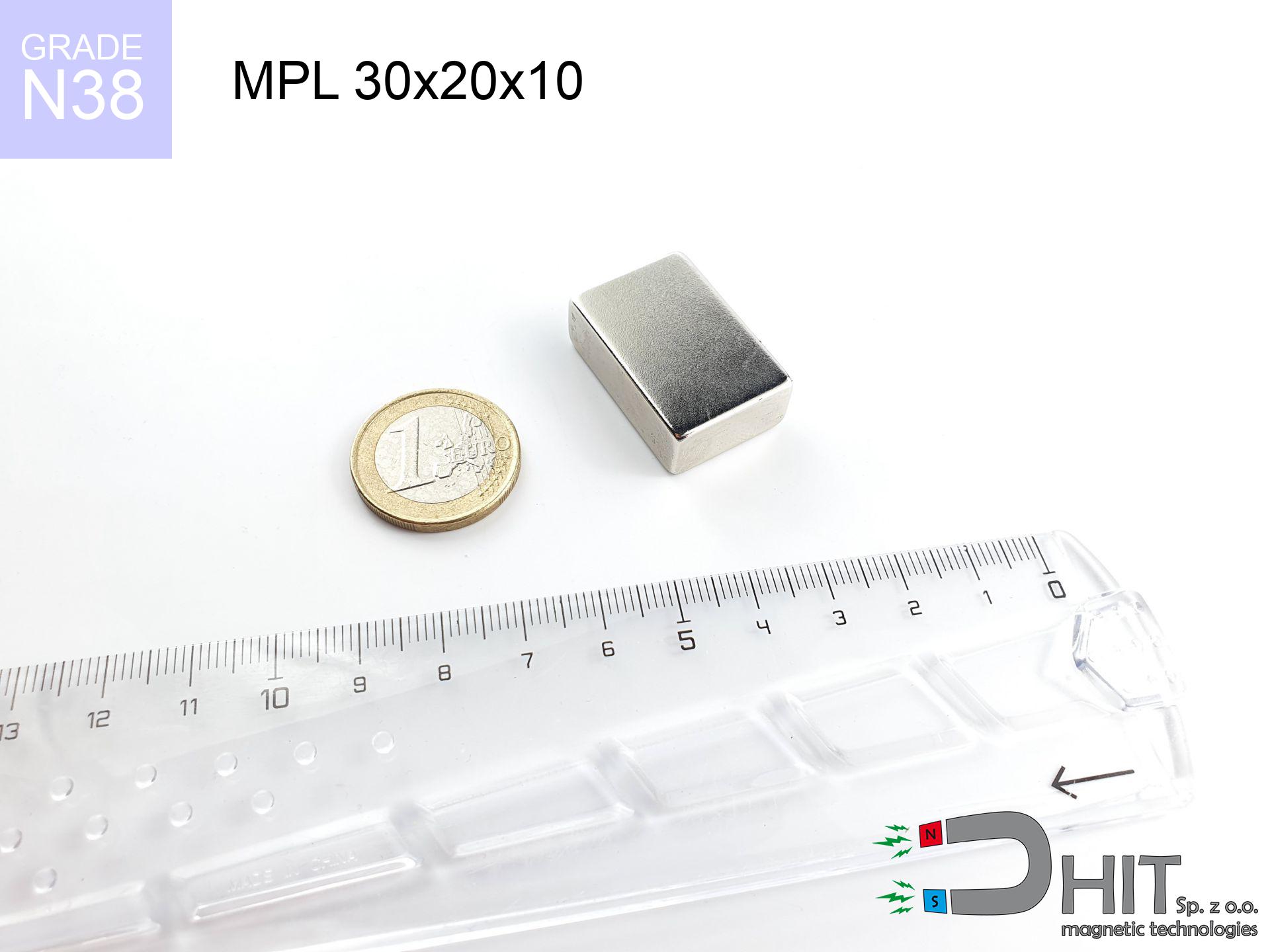MW 10x4 / N38 - cylindrical magnet
cylindrical magnet
Catalog no 010010
GTIN: 5906301810094
Diameter Ø [±0,1 mm]
10 mm
Height [±0,1 mm]
4 mm
Weight
2.36 g
Magnetization Direction
↑ axial
Load capacity
2.21 kg / 21.67 N
Magnetic Induction
386.91 mT
Coating
[NiCuNi] nickel
1.021 ZŁ with VAT / pcs + price for transport
0.830 ZŁ net + 23% VAT / pcs
0.770 ZŁ net was the lowest price in the last 30 days
bulk discounts:
Need more?Need help making a decision?
Give us a call
+48 22 499 98 98
if you prefer let us know through
contact form
the contact page.
Lifting power and form of a neodymium magnet can be verified using our
power calculator.
Order by 14:00 and we’ll ship today!
Magnetic properties of material N38
Physical properties of sintered neodymium magnets Nd2Fe14B at 20°C
Shopping tips
Advantages as well as disadvantages of rare earth magnets.
Besides their magnetic performance, neodymium magnets are valued for these benefits:
- They retain full power for around ten years – the loss is just ~1% (based on simulations),
- They possess excellent resistance to magnetism drop when exposed to opposing magnetic fields,
- A magnet with a shiny gold surface has an effective appearance,
- The surface of neodymium magnets generates a strong magnetic field – this is a distinguishing feature,
- Through (adequate) combination of ingredients, they can achieve high thermal resistance, enabling action at temperatures reaching 230°C and above...
- Thanks to freedom in shaping and the capacity to adapt to specific needs,
- Significant place in modern industrial fields – they find application in hard drives, brushless drives, medical devices, and complex engineering applications.
- Relatively small size with high pulling force – neodymium magnets offer high power in tiny dimensions, which allows their use in miniature devices
What to avoid - cons of neodymium magnets: application proposals
- To avoid cracks under impact, we suggest using special steel housings. Such a solution secures the magnet and simultaneously improves its durability.
- NdFeB magnets lose strength when exposed to high temperatures. After reaching 80°C, many of them experience permanent drop of power (a factor is the shape and dimensions of the magnet). We offer magnets specially adapted to work at temperatures up to 230°C marked [AH], which are very resistant to heat
- Magnets exposed to a humid environment can rust. Therefore during using outdoors, we suggest using waterproof magnets made of rubber, plastic or other material protecting against moisture
- Limited possibility of producing nuts in the magnet and complicated shapes - preferred is casing - mounting mechanism.
- Possible danger to health – tiny shards of magnets pose a threat, if swallowed, which is particularly important in the context of child health protection. It is also worth noting that tiny parts of these products can be problematic in diagnostics medical in case of swallowing.
- Due to neodymium price, their price exceeds standard values,
Detachment force of the magnet in optimal conditions – what it depends on?
Magnet power was defined for ideal contact conditions, assuming:
- using a sheet made of high-permeability steel, serving as a magnetic yoke
- whose thickness is min. 10 mm
- with a surface perfectly flat
- with direct contact (without paint)
- for force applied at a right angle (pull-off, not shear)
- at standard ambient temperature
Practical aspects of lifting capacity – factors
It is worth knowing that the magnet holding may be lower influenced by the following factors, starting with the most relevant:
- Gap (between the magnet and the metal), as even a tiny clearance (e.g. 0.5 mm) leads to a decrease in force by up to 50% (this also applies to varnish, corrosion or dirt).
- Load vector – maximum parameter is available only during pulling at a 90° angle. The force required to slide of the magnet along the plate is usually several times smaller (approx. 1/5 of the lifting capacity).
- Substrate thickness – to utilize 100% power, the steel must be adequately massive. Paper-thin metal restricts the lifting capacity (the magnet "punches through" it).
- Metal type – different alloys reacts the same. High carbon content weaken the attraction effect.
- Surface condition – smooth surfaces guarantee perfect abutment, which improves field saturation. Rough surfaces weaken the grip.
- Operating temperature – neodymium magnets have a sensitivity to temperature. At higher temperatures they are weaker, and in frost they can be stronger (up to a certain limit).
* Lifting capacity testing was carried out on a smooth plate of optimal thickness, under perpendicular forces, in contrast under attempts to slide the magnet the load capacity is reduced by as much as 5 times. In addition, even a slight gap {between} the magnet’s surface and the plate lowers the holding force.
H&S for magnets
Keep away from children
Only for adults. Small elements pose a choking risk, leading to serious injuries. Keep away from kids and pets.
Physical harm
Mind your fingers. Two large magnets will snap together instantly with a force of massive weight, destroying everything in their path. Exercise extreme caution!
Heat sensitivity
Watch the temperature. Exposing the magnet above 80 degrees Celsius will ruin its properties and pulling force.
Conscious usage
Handle magnets with awareness. Their immense force can shock even experienced users. Be vigilant and respect their force.
Allergic reactions
Some people experience a contact allergy to Ni, which is the common plating for neodymium magnets. Frequent touching may cause dermatitis. We recommend wear protective gloves.
Danger to pacemakers
Life threat: Strong magnets can deactivate heart devices and defibrillators. Do not approach if you have electronic implants.
GPS Danger
Navigation devices and smartphones are highly susceptible to magnetic fields. Close proximity with a strong magnet can ruin the internal compass in your phone.
Beware of splinters
NdFeB magnets are sintered ceramics, which means they are prone to chipping. Collision of two magnets will cause them cracking into shards.
Cards and drives
Intense magnetic fields can destroy records on payment cards, hard drives, and storage devices. Maintain a gap of min. 10 cm.
Flammability
Dust produced during machining of magnets is combustible. Avoid drilling into magnets unless you are an expert.
Important!
Learn more about risks in the article: Safety of working with magnets.






![SM 25x275 [2xM8] / N52 - magnetic separator SM 25x275 [2xM8] / N52 - magnetic separator](https://cdn3.dhit.pl/graphics/products/sm-25x275-2xm8-vih.jpg)


